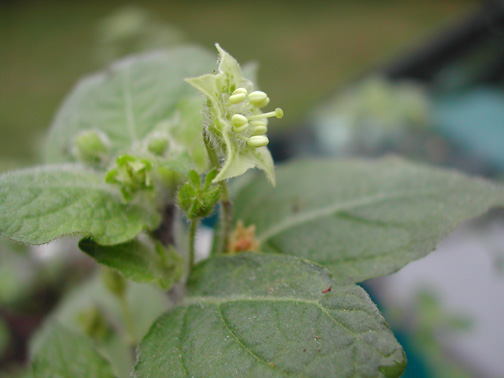 |
Flower in pistillate phase.
Corolla 16 mm in diameter.
Spooner et al. 7045, grown as Mione 322
Photo by Thomas Mione
|
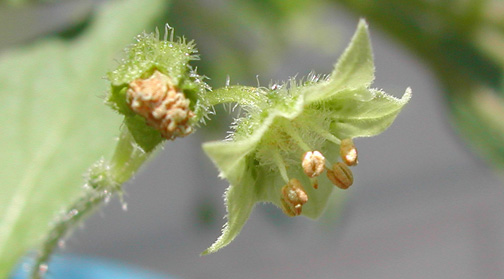 |
Flower in hermaphroditic phase
Spooner et al. 7068,
grown as Mione 326
Photo by Thomas Mione
|
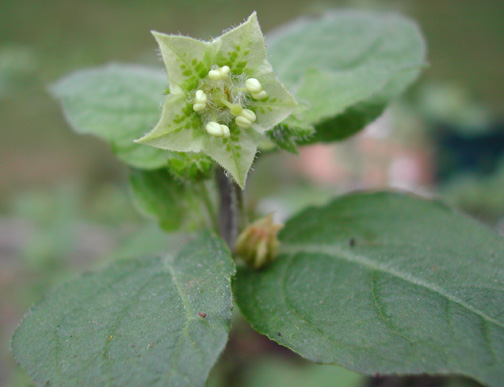 |
Flower in pistillate phase
Corolla 16 mm in diameter
Spooner et al. 7045, grown as Mione 322
Photo by Thomas Mione |
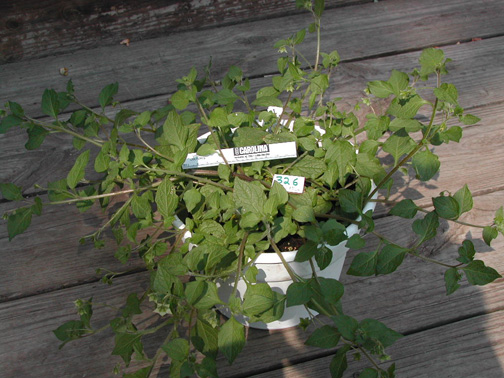 |
Whole plant.
The ruler shown is 12 cm long
Spooner et al. 7068, grown as Mione 326
Photo by Thomas Mione |
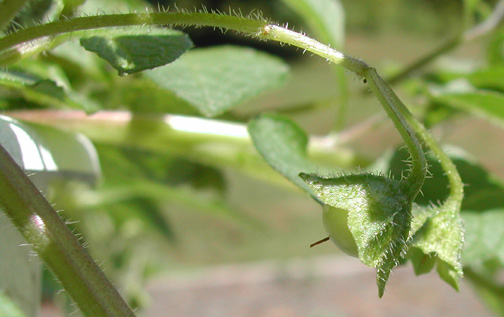 |
Unripe fruit partially surrounded by calyx
Spooner et al. 7068,
grown as Mione 326
Photo by Thomas Mione |
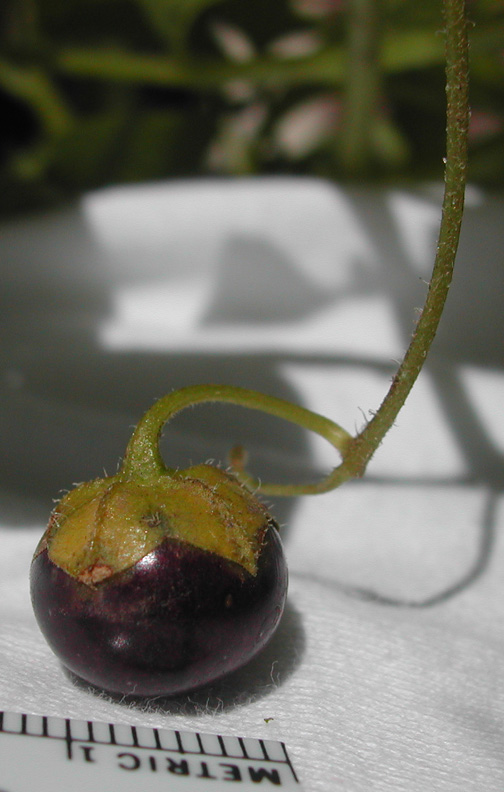 |
Ripe fruit
Mione 314
Photo by Thomas Mione
August 2002
|
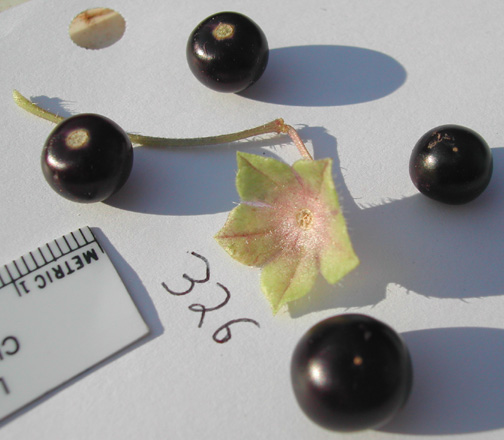 |
Ripe fruits of Jaltomata confinis
Mione 326
Plant
grown outdoors
Note that the calyx is shaped like a shallow
bowl
Photo by Thomas Mione
|
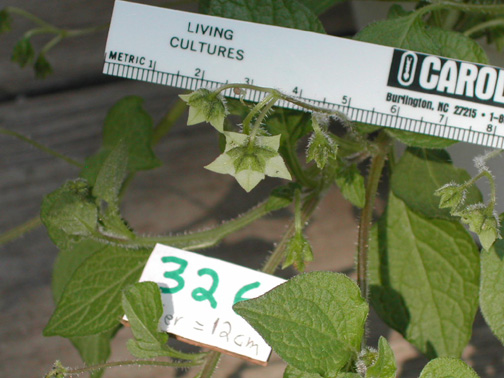 |
Back (abaxial side) of flower.
Note how wide the leaves of this
species are relative to their length.
Mione 326
The writing below the green
"326" would say
"ruler = 12 cm" if you could
see all of it.
Photo by Thomas Mione |
Day |
2014 |
Time |
|
Observations on one Tagged Flower. Accession 843.
Potted Plant in CCSU greenhouse.
No bagging to exclude insect visitors; no floral visitors were seen. |
0 |
28 Sep |
11:00 am |
flower closed |
Considered day zero because flowers have not yet opened for the first time. All but one flower was removed from each inflorescence for tagging.Flower bud looks like it will open tomorrow. |
1 |
29 Sep |
8:00 am |
pistillate |
Cor half way open. Anthers undehisced and filaments very short. I did not look for nectar. |
|
|
noon |
pistillate |
Cor open. Anthers undehisced and filaments very short. I could not see nectar drops. |
|
|
5 pm.
7:30 pm |
pistillate |
Corolla closed. |
2 |
30 Sep |
8:30 & 11 am; 2:30 pm |
pistillate |
Corolla open, anthers undehisced |
|
|
5:45 pm |
|
Corolla closed, anthers undehisced. |
3 |
1 Oct |
8:00 am |
pistillate |
Corolla beginning to open but mostly closed. Cloudy out, and I wonder if a brighter morning might trigger faster opening of the cor |
|
|
10:30 am |
hermaphroditic |
Corolla fully open (for this accession, broadly infundibular, not rotate). Stamens angle (proximal to distal) away from the style. Some anthers dehiscing, others not yet. Nectar present. 2 mm from anther to stigma. |
|
|
2:30 pm |
hermaphroditic |
Corolla fully open (for this accession, broadly infundibular, not rotate). Stamens angle (proximal to distal) away from the style. All anthers dehisced. Nectar present. 2 mm from anther to stigma. |
4 |
2 Oct |
7:30 am |
hermaphroditic |
Cor mostly closed. |
|
|
11:00 am |
hermaphroditic |
Corolla fully open (for this accession, broadly infundibular, not rotate). Stamens parallel to style. All anthers dehisced. Nectar present. 2 to 3 mm from anther to stigma. |
| |
|
1:00 |
hermaphroditic |
Corolla open. Filaments parallel to style. |
|
|
4:00 & 6:15 pm |
|
Cor closed |
|
3 Oct |
8:21 & 11:00 am; 3:30 & 6:30 pm |
|
Corolla closed, possibly bringing anthers into contact with stigma. Closed in a way that is hard to describe, the corolla is long and straight, as if to press the stamens inward. |
| |
4 & 5 Oct |
1:00, 11:00 am, respectively |
|
Corolla withering in place (not dropping off). |
|
|
|
Summary |
Corolla was open for four days. The flower was pistillate the first two days (filaments short, anthers closed). This flower became hermaphroditic on day three, involving rapid filament elongation in the morning and then dehiscence of anthers.
Delayed self-pollination?: If ovary expands we can say observations were consistent with self-pollinationthat was caused by the closure of the cor at the end of the flower's life bringing the stamens inward bringing the anthers in contact with the stigma.
|



